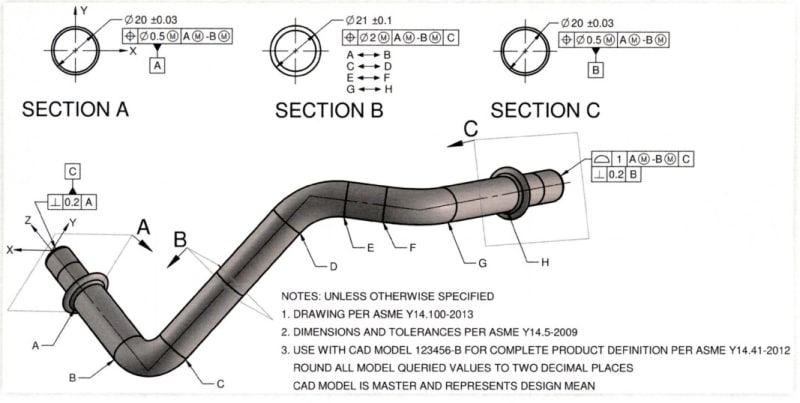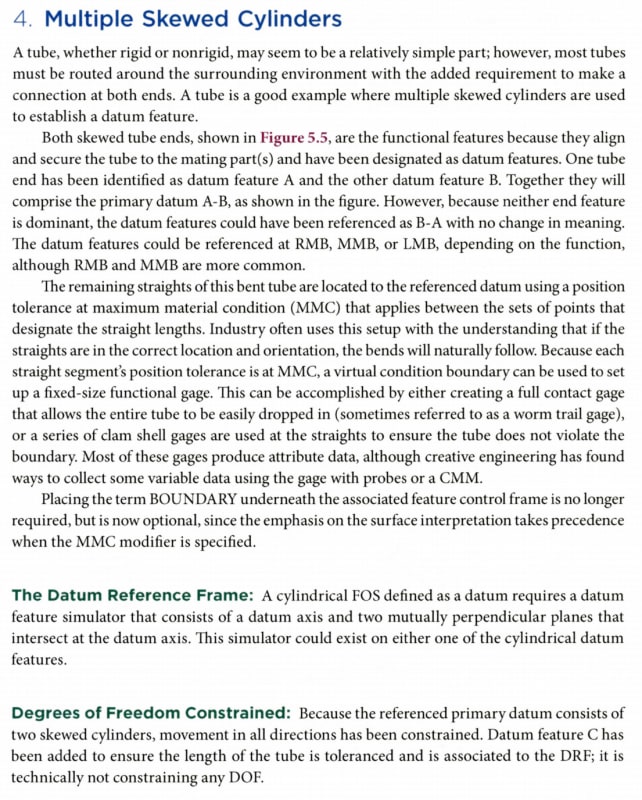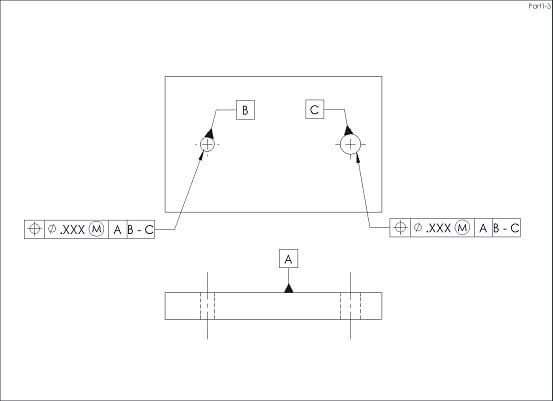CH,
Referencing a multiple datum feature B(M) - C(M) is generally a legitimate practice, as long as long as the virtual condition boundaries are well defined. How this would play out in the context of the quasi self-referencing FCF in your example is actually an interesting question.
The TGC's (simulators) for datum features B and C would be pins, fixed at the VC sizes of B and C. These would be the same size pins as would be needed for gaging the position tolerance itself. So the A|B(M)-C(M) references would apply the same control to the features as A| only in this case. I suppose this means that specifying A|B(M)-C(M) is legitimate, but redundant.
3DDave,
The bent tube examples highlight certain issues, some of which expose limitations in Y14.5's current theory.
The way I think of it is that we can always define the TGC's / simulators and identify the degree of freedom constraint from those. Y14.5 describes the requirements of TGC's near the beginning of the DRF section (7.5.2 in Y14.5-2018), and I would say that these requirements are generally correct and not controversial. The TGC's have perfect form, basic orientation and location relative to the other TGC's, are fixed in size for MMB or LMB and adjustable in size for RMB. This tells us what we need to know to define the gage elements needed to hold the part. From those gage elements, we can identify which degrees of freedom would be constrained and which would be left open. This type of analysis works well, even for the bent tube examples with A-B datum features that are skewed relative to each other (or two offset parallel planes). The TGC's (and gage elements) are still basically oriented and located relative to each other. The A-B TGC's in the OP example would constrain all 6 degrees of freedom, but not overconstrain.
If we try to go further and identify datums and a DRF, this is where things can go off the rails. Y14.5's datum theory is based on simple configurations of datum features, and does not generally perform well when applied to less simple configurations. This is why we struggle to define a single datum axis from the two skewed cylinders - there is no unique way to do this. We have two TGC's that are skewed relative to each other, and there is not a unique or obvious way to define a three-plane coordinate system in them. If we look at the Primary Datum Features table near the beginning of Y14.5's DRF section, we see that the 2 skewed cylinders form a Complex datum feature and the datum is an Axis, Point, and Center Plane. To me, this description is only useful for special-case features like the oblong cone shown in the table.
As you mentioned, another issue that the bent tube examples introduce is part flexibility. For many parts of this type, there is enough flex to bend the part into full contact with multiple TGC's that would otherwise overconstrain a fully rigid part. It appears that this type of consideration may have been used in the SAE excerpt that was posted.
Evan Janeshewski
Axymetrix Quality Engineering Inc.



